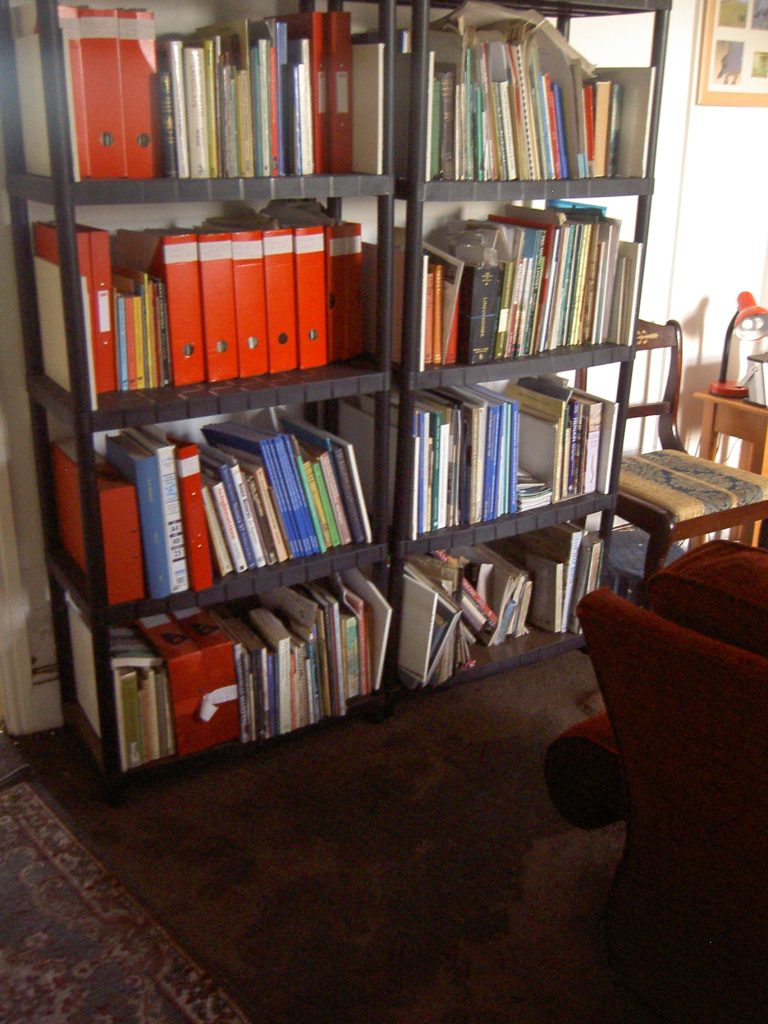
Although not immediately obvious from the picture above the bottom two shelves of the bookcase were inundated in 2013 (s.p.b.), this including all my notes on walking the east coast of England, in stages, in the 1990s – cruel irony, leaving one with a ‘sinking’ feeling.
Recently my friend from Barton and his wife were holidaying at Heacham on the coast of the Wash in west Norfolk and, while touring, went around some villages between Swaffham and Downham Market to see the cottage in which I was brought-up; an end-terrace mock-gothic 1870s estate cottage in Boughton. They were very impressed with its distinctive style but didn’t see inside, and certainly didn’t see inside in the 1950s and ’60s, and later in the early part of this century when my elderly sister struggled terribly to endure the serious deterioration of the property (see Doris Clarke – a Life in section two of this website).
Houses and public buildings are built today with a stated expected lifespan but rarely is this period of time used to accumulate capital for their successors. Yes, on balance, I do approve of the modern perspective of restore rather than demolish but this is in the context of housing as a private capital asset and sometimes residents/tenants have to endure deteriorating living conditions as they have not the capital to improve it, this only becoming available after they have ‘left’. The state of living accommodation depends on constant attention to its welfare and maintenance and in a free-market economy the degree of attention to this varies.
Next Friday evening I am guiding a walk around Pearson Park to look at the large houses built on perimeter plots and make some relevant comments. It starts at 6-30pm in front of number 58, Pearson Park, Hull. This, by coincidence, is the Friends of Pearson Park’s contribution to the Queen’s Platinum Jubilee.